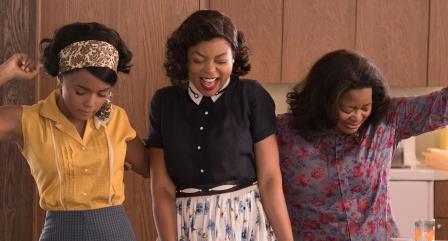The role of race in space

February 7, 2017
The Space Race is an iconic part of American history. It’s in our history books, and on our TV screens. It’s a source of national pride.
Growing up Canadian, I didn’t connect with the patriotic zeal of the Space Race. And yes, before you ask, I have seen Tom Hanks’s legendary performance in Apollo 13.
Sure, it was cool we put people on the moon, but I never felt the patriotic duty to come together as a nation and crush the Soviets.
That being said, “Hidden Figures” is perhaps the closest I’ve come to experiencing that feeling of all-American glory.
There were a couple different things that immediately stood out to me upon leaving the theater.
First of all, I appreciated the way the film was centered around the careers of the three female leads. Usually, films with leading ladies are centered around a love interest, or ‘the joy that comes from the womanly duty of raising a family, and oh by the way she has a job, too.’
However, “Hidden Figures” was almost exclusively about the women’s careers. The film follows three women of color who work in mathematics and engineering at NASA.
Katherine Johnson, played by Taraji Henson, is a voracious learner, particularly in mathematics. She is hired by the National Committee for Aeronautics, or NACA, where she works as a computer.
Throughout the film Katherine faces many instances of discrimination, be it segregated bathrooms, or condescension from her colleagues. Despite all this, she maintains a level head and manages to excel at her job, going above and beyond what is expected of her.
Dorothy Vaughan, played by Octavia Spencer, is perhaps the most practical of the three women. Originally hired as a computer in the segregated black wing of the NACA, she does all the work of a manager, but without the title or salary.
As the Space Race advances technologically, Dorothy soon realizes she and her staff of other young women of color will be put out of a job by new machines that can calculate numbers at much higher speeds.
Dorothy decides there is only one way to keep her job as mechanical computers begin to replace human ones: she must learn to program the computers.
Mary Jackson, played by Janelle Monáe, is an outgoing young trailblazer, determined to work as an engineer for Nasa. In order to do so she must take classes that are only offered at the university of Virginia – a whites only school.
Mary is seen to be flirtatious and fun-loving, and sometimes, too mouthy for her own good. At several points in the movie Mary’s love life is mentioned, but it doesn’t detract from her overall story line.
She is presented as a hardworking aspiring engineer, who also has a social life, and neither of these things cancels out the other.
The film maintained an even balance between the work the women did and the discrimination they faced while doing it.
The director and writers did a good job acknowledging upfront the struggles these women faced, both racism and sexism.
There were several powerful scenes in the movie but the one that stood out to me the most was a confrontation between Katherine Johnson and her boss Al Harrison who is angry because Katherine is gone for half an hour almost every day.
She responds that it takes her about half an hour to get to the colored bathroom and back which is a mile and a half away.
This really made me rethink how I view the sixties. I first learned about the sixties in two distinctly separate contexts (Three if you count the hippie thing). We learned about JFK, Neil Armstrong, and the Apollo missions; or we learnt about MLK, Rosa Parks and the sit-ins.
The sixties were either the era of the Space Race, or the era of Civil Rights. Often when we think about history, we like to compartmentalize one event from another, but it’s important to remember that’s not how it happened.
Apollo 8 was launched in December of 1968. Earlier that year in April, Dr, Martin Luther King Jr. was assassinated.
Katherine Johnson worked at NASA for 33 years calculating and verifying launch codes and trajectories on several NASA projects. For eleven of those years, she did so under segregation.
Hidden Figures tells the story of three women who contributed significantly to John Glenn’s space flight, which turned the tide of the Space Race. They did so because they felt a sense of pride for a country, that until 1964, they couldn’t fully call their own.
And for the first time since I can remember, I felt it too.
